The best pastel pencils
Our experts select the best pastel pencils for artists, from beginners to professionals.
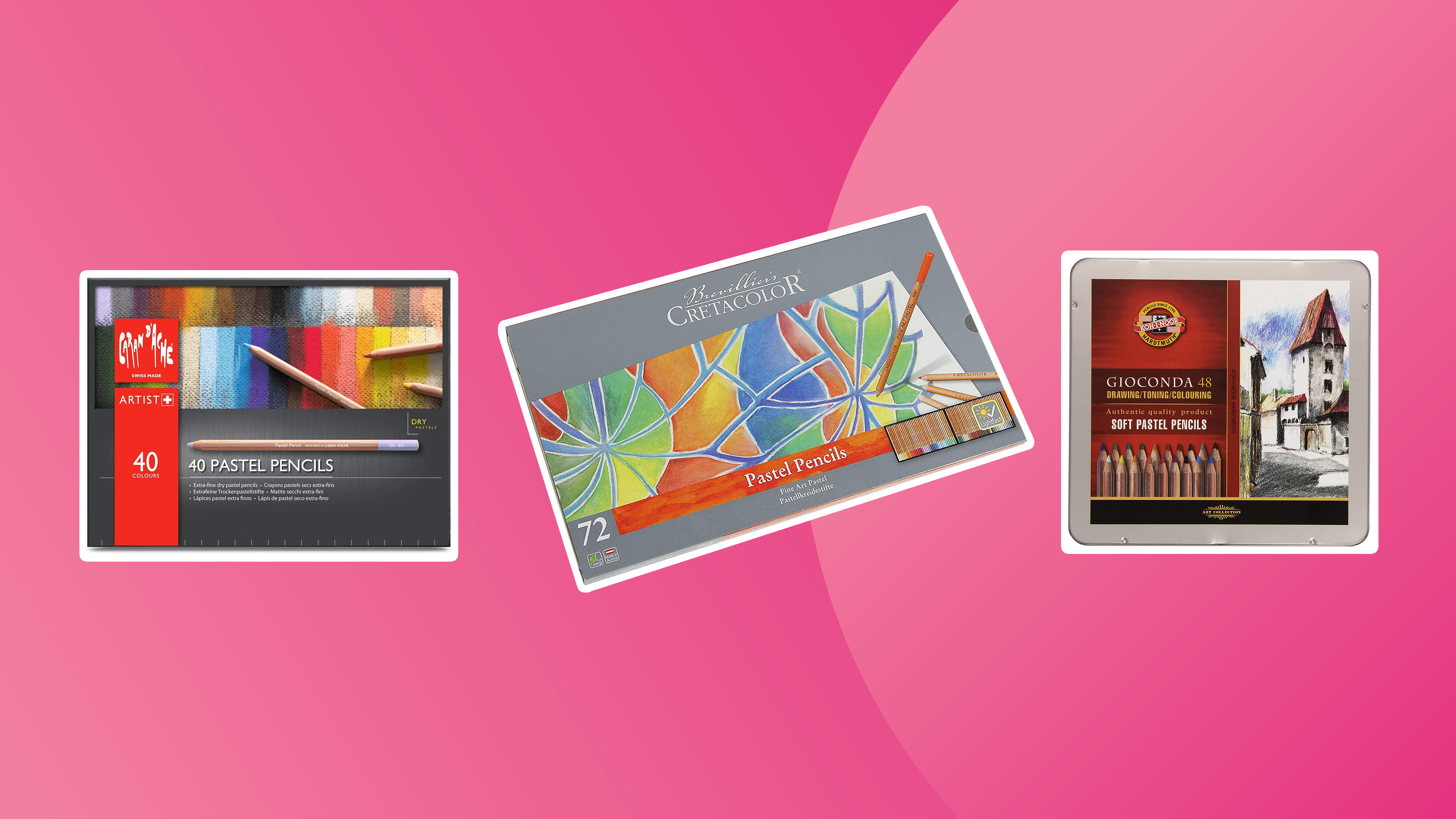
The best pastel pencils offer the soft, blendable colour of pastels but in a familiar and user-friendly pencil form. This makes them easier to handle and control, both for beginners and more experienced artists, and they're less messy, too.
Below, we've gathered together the best pastel pencils on the market for a variety of uses. To compile this list, we've got hands-on with a wide range of pencils and evaluated them in terms of binding, application, lightfastness, and more. Our testing process is rigorous and involves a variety of drawing techniques, along with a range of different canvas types.
If you'd like to use these pencils along with traditional pastels, we also have a guide to the best oil pastels guide. And you may also want to check out our roundups of the best watercolour pencils and best pencils overall.
The best pastel pencils available today
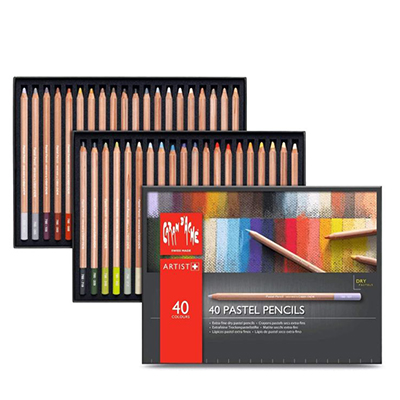
Quality: professional
Quantity: 12–84
The best pastel pencils for professionals are pricey but deservedly so. Richly pigmented, nearly all 84 colours have high lightfastness ratings. Smooth going down, they leave dense colour. Harder than a soft pastel, the core is quite thick. The hexagonal barrel means the pencil won’t roll away, and the wood is smooth and easy to cut.
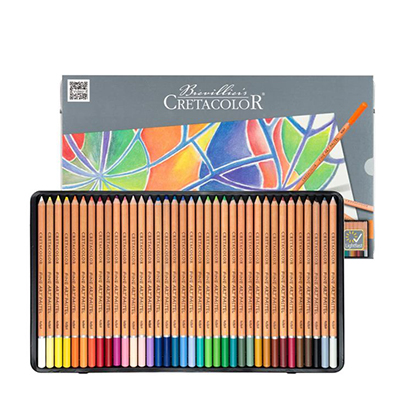
Quality: professional
Quantity: 12 – 74
On the firmer side, these have a smooth, chalky feel. They're easy to sharpen to a good point and keep a point for longer than many others, putting them among the best pastel pencils for fine details. The colour intensity is also excellent. They tend not to blend so readily, though they transfer to the surface well. The core is a little fragile.

Quality: intermediate
Quantity: 12 – 48
Koh-I-Noor’s are the best soft pastel pencils I’ve used. They're bright and blend readily, though with some loss of intensity. With only 48 pencils, the range is narrow but offers enough for most artists. For the price, the colour is surprisingly intense and most are lightfast. The casing is good and easy to sharpen with a blade but narrow and strong enough for a sharpener.
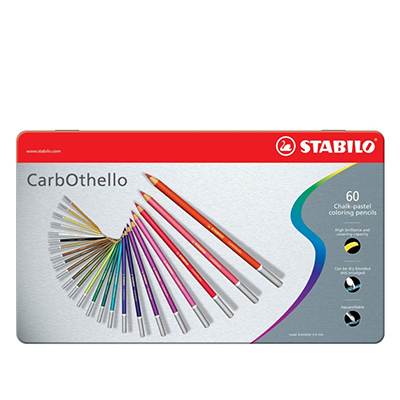
Quality: intermediate
Quantity: 12 – 63
These have a chalky feel, though I find them quite smooth going down. They blend reasonably well and leave nice, dense colour, putting them among the best pastel pencils to balance intensity and easy blending. Because of their softness, they tend to wear quite quickly and produce a fair bit of dust, so they suit bolder marks (see our full Stablio CarbOthello review for more details).
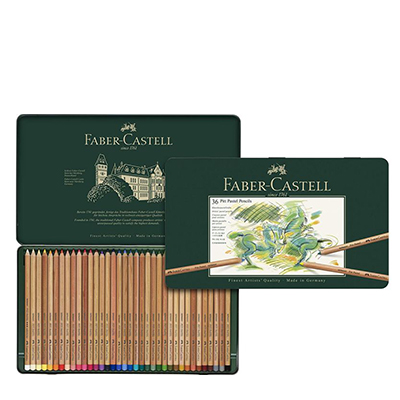
Quality: professional
Quantity: 3 – 60
This versatile option performs well for the price point. They feel quite smooth, are well pigmented and lay down colour fairly well – they do need a bit more pressure to produce dense marks, though. This means they can get a bit dusty. In terms of softness, Pitt pastels sit somewhere in the middle: hard enough to hold a reasonable point but soft enough to blend a bit.
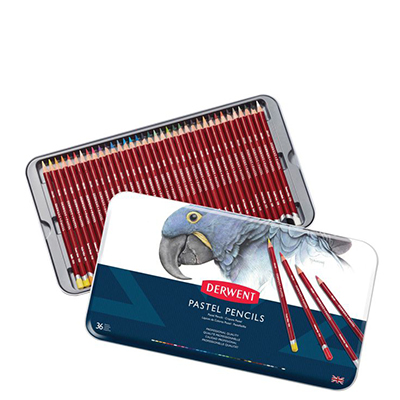
Quality: intermediate
Quantity: 6 – 72
This softer option has a slightly chalky feel more like a traditional pastel. They readily transfer pigment on a variety of surfaces and are particularly good at blending. The round wood binding is smooth and easy to cut through. The core may be a bit too brittle to use with the range’s sharpener, so I recommend a blade. It's a versatile, malleable option that feels closer to a pastel block – good to combine with other media.
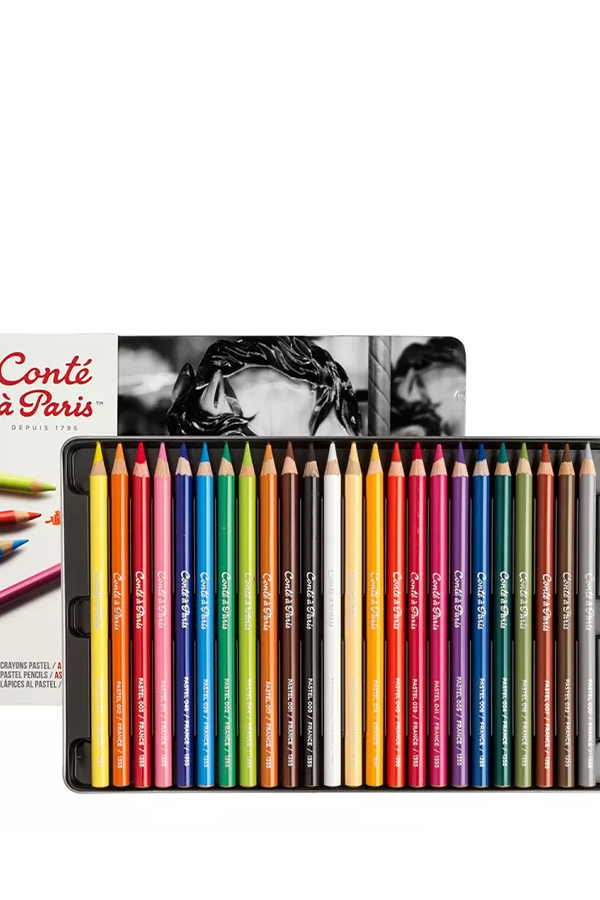
Quality: intermediate
Quantity: 84
Conté à Paris pastel pencils are quite a chunky pencil that is roughly in the middle regarding softness and blending. They are particularly useful for the range of marks they can make, as the thicker core can produce broader lines. They also blend quite well. They are a bit tricky to sharpen, though.
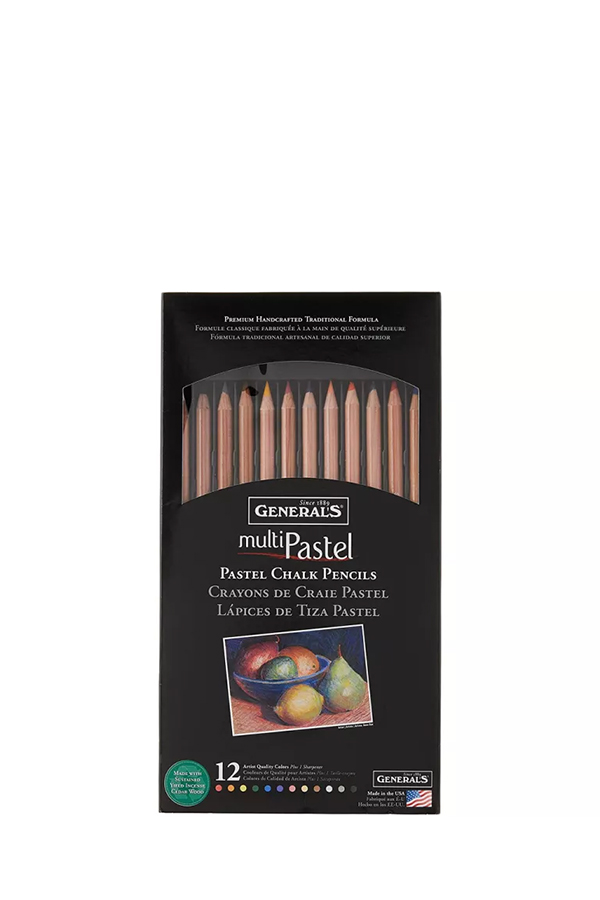
Quality: student
Quantity: 36
General’s multipastel pencils are chalkier than some others, with a much firmer core. The hardness means that they hold their point well and require less sharpening. This makes them capable of producing some really fine details. In terms of colour, these can seem a bit washed out. The hardness also means that these pencils don’t blend much.
FAQs
What are pastel pencils?
Pastel pencils are a form of pastel encased in wood (as with most pencils). To give it colour, the pastel core contains pigment and it also contains binders (usually including chalk) for body. This element is what differentiates the pastel pencils from the pencils in our best coloured pencils list. Ordinary pencils use wax with other binders rather than chalk.
What are the benefits of using pastel pencils?
The wooden casing of pastel pencils allows for finer details and sharper lines compared to bulkier soft pastels. They also create less mess and are less prone to breakage. On the downside, pastel pencils may be less vibrant than normal pastels as the pigment concentration is typically slightly lower than soft pastels. Also bear in mind that their core can break if sharpened too aggressively.
Why do my pastel pencils keep breaking?
There are a few reasons why your pastel pencils might be breaking. The most likely is that you're over-sharpening the nibs. So try using a light touch when sharpening your nibs in future and avoid exerting too much pressure on them. Also be aware than standard pencil sharpeners can be too harsh, so use a knife instead, or a specialist sharpener designed for larger cores. Finally, high temperatures can affect the nib's integrity so make sure you store your pencils in a cool, dry place.
What's the best pastel pencil brand?
There are various brands of pastel pencils that we'd recommend, but our top pick for professionals is Caran d'Ache. Our favourite intermediate pick comes from Koh-l-Noor and we also rate Cretacolor, Stablio, Faber Castell and Derwent.
How to choose the best pastel pencils
Picking the best pastel pencils for you will depend a lot on your working style. You may want to compromise between softness and how much the pencil can blend versus being firm enough to produce crisp lines. If you have a more expressive or painterly drawing style, opt for soft pastel pencils, and if you are more interested in fine details, look for ones on the harder side (note that all pastel pencils tend to be harder than conventional soft pastels and should produce less mess).
Another thing to consider is how easy the pencils are to sharpen. The core of a pastel pencil tends to be quite fragile, and it may be necessary to use a blade to sharpen it. Also, more expensive pastel pencil ranges generally contain more pigment, meaning the colours are brighter, and they are more likely to be lightfast, so they won’t fade over time. This is important for professional work but might be sacrificed for beginners in favour of value.
Note that one challenge of pastel pencils is the dust they produce. To stop this lingering on the page, it's a good idea to draw using one of the best artists’ easels.
How we test the best pastel pencils
To test these pencils we used them in a range of different art projects. We tested them in terms of binding (how well they stick to a surface) application (how well they go on the surface) and lightfastness (how well the colour stays) as well as number of colours and overall value. We also evaluated whether they'd be best suited for beginners, intermediate users or professionals.
Daily design news, reviews, how-tos and more, as picked by the editors.

Lancelot Richardson is an artist, painter, and freelance illustrator based in Brighton, UK. He tutors life drawing at independent art school Draw Brighton, and teaches in their online Patreon courses. He is also a freelance writer, producing articles on art and drawing. He works in both traditional and digital mediums.
- Rosie HilderDeputy editor
